#Krzysztof Kielowski
Text
Trois couleurs : Bleu, Blanc, Rouge
Dir. Krzysztof Kieślowski
#Trois couleurs : Bleu#Blanc#RougeDir. Krzysztof Kieślowski#krzysztof kielowski#movies#poet#cinema#poetry#qoutes#book qoute#art#books & libraries
1 note
·
View note
Text
Juliette Binoche, la persecución de la credibilidad
La actriz francesa, además del galardón que reconoce su trayectoria, es el rostro oficial de esta edición del Festival de Cine de San Sebastián y participa en dos de las películas programadas, una de ellas, 'Le lycéen', opta a la Concha de Oro.

La actriz, en la alfombra roja del año pasado. / ARIZMENDI
TERESA FLAÑO
San Sebastián
Jueves, 15 septiembre 2022, 15:52
La sombra de Juliette Binoche va a ser muy alargada en este Zinemaldia 2022 donde tiene un papel muy protagonista. El domingo recibirá el Premio Donostia en una gala tras la que se proyectará 'Avec amour et acharnement', de Claire Denis, pero su presencia va más allá porque es la imagen del certamen. Una fotografía en blanco y negro de su rostro, tomada por Brigitte Lacombe, ilustra el cartel oficial. Además, participa en una de las películas de la Sección Oficial 'Le lycéen', de Christophe Honoré. Ha visitado con asiduidad el Festival de Cine de San Sebastián, la última vez para acompañar a 'La verdad', de Hirokazu Koreeda.
Juliette Binoche es uno de los nombres que primero llegan a la mente cuando se habla del cine francés y sus intérpretes. La mejor prueba de que es un icono galo está en que se le conoce como 'la Binoche', al igual que sucede con 'la Deneuve' (Catherine) o 'la Huppert' (Isabelle), actrices con las que a partir de ahora aparecerá en la lista de premios Donostia, galardón que se unirá al Oscar que recibió por 'El paciente inglés' (1996), papel por el que también recibió un Bafta y el Oso de plata en la Berlinale y que le valió el reconocimiento internacional. También ganó un César y un León veneciano como mejor actriz por 'Tres colores: Azul' (1993), y una palma en el Festival de Cannes por 'Copia certificada' (2010).
Otra lista, la de los directores para los que ha trabajado, es asimismo de relumbrón. Jean-Luc Godard -fallecido este martes-, Louis Malle, Krzysztof Kielowski, Patrice Leconte, Lasse Hallström, Michael Haneke o Abbas Kiarostami son algunos de los reputados realizadores que han contado con esta actriz que se permitió el lujo de rechazar las propuestas de Steven Spielberg para aparecer en la tercera entrega de Indiana Jones -entonces estaba inmersa en el rodaje de 'Los amantes del Pont-Neuf'-, 'La lista de Schindler' -estaba embarazada- y 'Parque Jurásico' -porque ya se había comprometido para protagonizar 'Azul'-.
Lo cierto es que no para de trabajar. Ella misma afirma que está «más solicitada que nunca». Junto a las dos películas que se van a poder ver en el Festival de Cine de San Sebastián, también ha protagonizado recientemente 'Paradise Highway', donde da vida a una dura camionera en un thriller sobre la esclavitud infantil y acaba de rodar una serie para Apple TV, 'The New Look', que se estrenará el año que viene y en la que encarna a Coco Chanel. También se puede ver en las plataformas de streaming, uno de sus últimos trabajos, presentado el año pasado en el Festival, 'En un muelle de Normandía' (Emmanuel Carrère).
Experiencias
Esta parisina, nacida en 1964, considera que la credibilidad de las personajes que interpreta ha sido la mejor herramienta para llegar hasta este punto de su carrera. Para ello, ahonda en su interior buscando sentimientos similares a los del personaje. Siempre persiguiendo la verosimilitud, ha intentado sentir experiencias parecidas a las de sus protagonistas. Así vivió durante unos días en la calle antes de rodar en 1991 'Los amantes del Pont-Neuf' o ingresó en un psiquiátrico para preparar 'Camille Claude' (2013) o, más gratificante, aprendió confitería de cara a su papel en 'Chocolat' (2000).
Tras dar sus primeros pasos en el teatro y formarse como actriz en el Conservatorio Nacional de Arte Dramático, su primera aparición en la gran pantalla fue con 'Liberty belle' (1982) de Pascal Kané. Enseguida fue reclamada por los directores franceses más relevantes de la década de los 80 como André Téchiné ('Rendez-vous') o Godard ('Yo te saludo, María').
Binoche ha participado en grandes superproducciones de acción como 'Godzilla' (2014) y hace diez años trabajó en 'Cosmópilis' junto al otro Premio Donostia de este año, David Cronenberg. Son frecuentes sus incursiones con el cineasta Olivier Assayas, que la ha dirigido en 'Las horas del verano' (2008), 'Viaje a Sils Maria' (2014) y 'Dobles vidas, 2018'.
En 'Avec amour et acharnement', filme por el que Claire Denis recibió el Oso de plata a la Mejor dirección en Berlín y que se proyectará tras la gala del Premio Donostia, la actriz se adentra en el mundo de los sentimientos dando vida a una mujer, aparentemente perfecta junto a su marido interpretado por Vicent Lindon, que ve cómo su matrimonio se tambalea cuando reaparece en su vida un antiguo novio.
#juliette binoche#Premio Donostia#Jean-Luc Godard#Louis Malle#Krzysztof Kielowski#Patrice Leconte#Lasse Hallström#Michael Haneke#Abbas Kiarostami
0 notes
Text
Trois couleurs : Blanc, 1994
A veces la claridad tiende a pasar por obviedad y el impacto deja de ser proporcional a su agudeza. Tal vez por eso el final de esta película podría interpretarse inverosímil. Cuando dos voluntades se desarrollan es imposible la igualdad, solo entre diferentes habrá condescendencia. Amor u odio, compresión o indiferencia.
0 notes
Photo

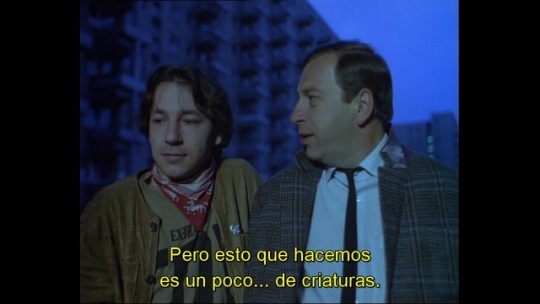

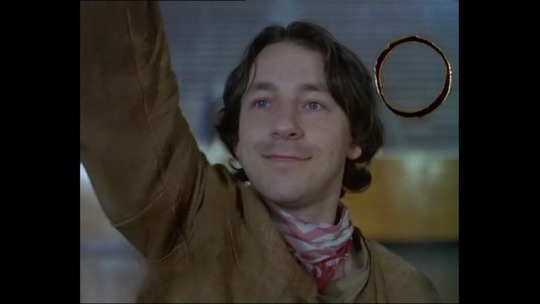
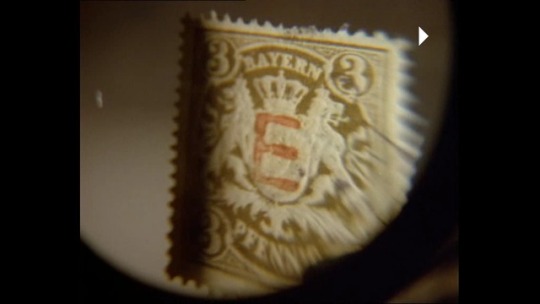

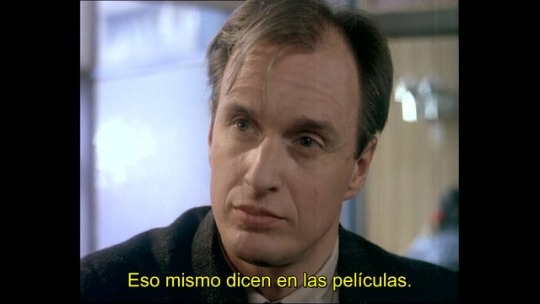

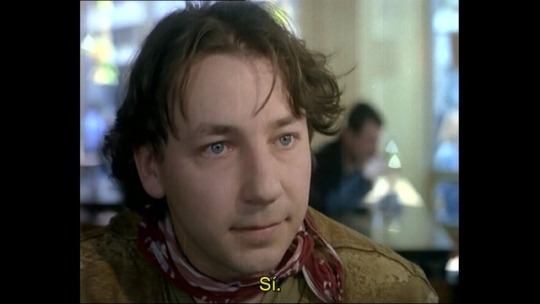

Dekalog 10 - 1988 - Krzysztof Kieslowski
Y pienso para mí mismo “Pero esto que hacemos es un poco... de criaturas”, y de inmediato me respondo “Pero es hermoso”.
Reseña en The Film Sufi:
http://www.filmsufi.com/2009/04/dekalog-10-thou-shalt-not-covet-thy.html
#Dekalog 10#Dekalog Ten#Krzysztof Kieslowski#Kielowski#polish cinema#movies#10 frames#10 fotogramas#nisiquiera
3 notes
·
View notes
Photo
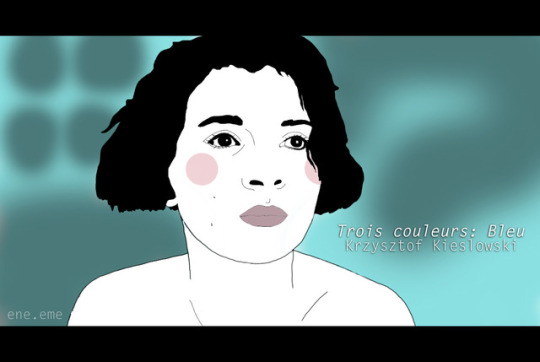

Tres colores: Azul, 1993. Krzysztof Kielowski
Tres colores: Rojo, 1994. Krzysztof Kielowski
3 notes
·
View notes
Text
The Battle of Accessibility A Reflection on Cinema and Directing
In listening to the interviews given by Martin Scorsese and Krzysztof Kielowksi both of them in their unique ways stressed the elements of accessibility. Kielowski spoke more in regards to the creation of a film, meanwhile Scorsese stressed the need for of accessibility for film in its viewership. Kielowski navigated his discussion through the analysis of a scene and its constructive feedback with respect to accessibility of to an actor, of an actors emotions, and of the emotions of an audience. Scorsese spoke more in a formal sit down interview, and spoke of the accessibility in viewership, and maintaining the larger goal of a film to have an extended viewership or a lasting impact on its audience.
In Scorsese’s interview he speaks a lot in respect to the recent French New Wave and its impact on the accessibility in creation of film and its more instant expression. The French New Wave pioneered on the creation of minimalist films due to the progression in technology which allowed for films to be created on a smaller budget, a shorter timeline and a minimalist crew. This accessibility allowed for vast diversity as other voices besides those of Hollywood and large European productions could now be heard. Scorsese tied this epoch back to his program that he initiated “Exhibition in the Park.” The whole program conceived in conjunction with New York University, is meant to serve as a complementary force to the technological revolution. Arguing the concept of commercial in juxtaposition to independent, Scorsese stressed the need for exhibition of the smaller productions to insure the continuance and the diversity of stories, Kino-eye and diversity within cinema. This proved to be true within the parameters of our own production as well. Specifically navigating assets or finding support from groups and donors that would allow viewership of our thesis film. Fortunately navigating these waters was not as difficult as it had been previously, but there still storms on the horizon. One of the main resources that guarantees the possibilities of exhibition is now through capital, which we had to raise for, and proved to be a limiting factor in some of the film festivals we will ultimately submit to. Scorsese focused on providing free viewership purely on the basis of merit and ability, again coinciding with his fundamental belief in accessibility. Scorsese mostly highlighted exhibition and viewership of a film, his thread of accessibility permeates into Kielowski’s interview.
Kielowski explores the techniques and motivations within a scene by discussing with actors their logic behind each action. In order for their to be a space for an open discussion of the logic behind an actor’s action or the character that they are portraying and their actions, there needs to be accessibility. Accessibility for the actor with respect to their inner emotions and ensuring that their performance not only is genuine but also organic. The accessibility of a director to the actor with respect to communication and invoking a specific response, as well as an actor’s accessibility into their own psyche. The combination of these elements allows the audience to feel privy to something, “discrete and intimate.” Upon reviewing the footage it seems clear that Joel was able to invoke this response from the film’s talent Ricky. Ricky was able to relate to the experiences placed before him on such a personal level, that he recited his own hardships without even speaking a single word. Granting access to a moment within his life, that the audience otherwise would have never shared with him.
The end goal of many filmmakers is exposure and exhibition, it is crucial that not only are their films accessible to be viewed but also that in their process of construction, there is an accessibility to the actor’s emotions in their portrayal of a character. The widespread accessibility and openness of the cinematic art form influences Kielowksi and Scorsese. Whether it is purely in regards to exhibition or in its creation, accessibility serves a crucial element to successful filmmaking.
Bibliography
Kieślowski, K. (2018, November 28). 1-Hour Masterclass / Workshop with Krzysztof
Kieślowski from 1994 [Interview]. Retrieved June 23, 2019, from
www.youtube.com/watch?v=u-Iy3JyPA0g
Scorcese, M. (2014, November 27). 22 Minute Interview with 27 Year Old Martin
Scorcese [Interview]. Retrieved June 23, 2019, from
https://www.youtube.com/watch?v=DOsvf8Cpxgo
0 notes
Video
youtube
Just added to our DVD collection: Three Colors: White.
0 notes
Text
andrey, what is art?
#the art of cinema#cinema#art#movies#andrei tarkovsky#poet#tarkovsky#books & libraries#poetry#book qoute#qoutes#robert bresson#krzysztof kielowski#jean luc godard#frederico fellini#ingmar bergman#terrence malick#films
25 notes
·
View notes
Text
Trois couleurs : Bleu, 1993
El duelo es capaz de consumir al corazón, exponerlo a una colección penas. Inhibirlo de sentir, apartarlo de la realidad. Tal estado solo es superado por la relegación de aquello que nos cautivó.
Liberar al espíritu, dejar ir...
Puto peliculón.
0 notes
Video
youtube
Just added to our DVD collection: Three Colors: Red.
0 notes